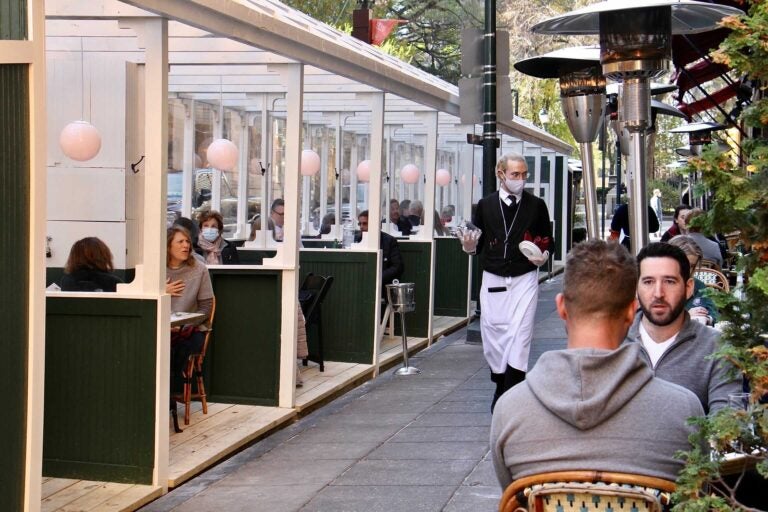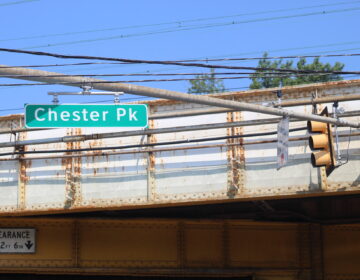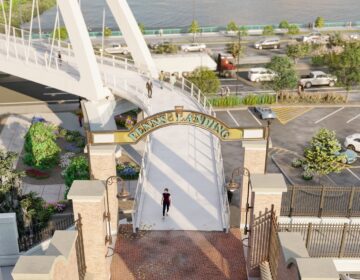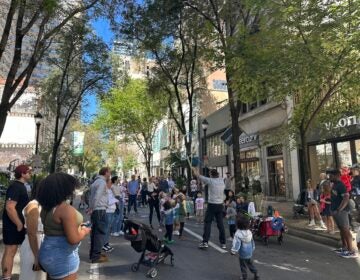Will Philly’s car-free streets boost business? Some retailers will find out in September
Several streets near Rittenhouse Square in Center City will temporarily close to vehicle traffic every Sunday in September during a pilot program.
Listen 1:00
Outdoor dining at Parc on Rittenhouse Square. (Emma Lee/WHYY)
Have a question about Philly’s neighborhoods or the systems that shape them? PlanPhilly reporters want to hear from you! Ask us a question or send us a story idea you think we should cover.
Center City’s Rittenhouse Square neighborhood will get a temporary pedestrian-only zone next month over four consecutive Sundays starting on September 8.
And there are about 50 retail storefronts along the stretch between 15th and 19th Streets along Walnut Street. There are no mobile food trucks, street vendors or pop-up markets – only existing retailers can participate.
The retail corridor is a smattering of clothing stores, coffee shops, restaurants and specialty retailers which could see a boost in sales as pedestrians stroll, shop and dine without the stress of traffic. Existing restaurants can extend their tables onto the sidewalk for customers as a pop-out streetery.
The Center City District, the Rittenhouse Row business group and the city of Philadelphia collaborated on the program as one way to improve pedestrian foot traffic for retailers on the commercial corridor. The retail occupancy rate of Rittenhouse Row is roughly 83 percent, according to Center City District data.
The concept is similar to that of Newbury Street in Boston, which is a roughly mile-long stretch that opens to pedestrians only on Sundays over the summer and into the fall.
“I think the hypothesis is that people walking down the street benefits retailers more than people driving down the street,” said Prema Katari Gupta, president and CEO of Center City District. “We are looking forward to collecting a lot of data. We are trying to go into this with an open mind and run it like an experiment.”
Center City District is coordinating free events in the public space including games for children, circus arts performers, salsa dancing and live musicians between 10 a.m. and 5 p.m. on Sundays during the pilot. The organization has been creating pedestrian-friendly public plazas, sprucing up bike lanes and streetscaping across the urban core for decades. Cross streets at some intersections along Walnut Street will permit vehicle traffic during the events.
About 75,000 people already live in Center City and overall pedestrian foot traffic — which includes visitors — has returned to roughly 84% of levels last seen in 2019. All visitors are encouraged to ditch their vehicles for the events.
“It’s not a festival, it’s quieter,” Katari Gupta said. “I remember the first time we saw the street closed and people dining outside [during COVID]. I remember being very moved by that experience, just seeing people together enjoying themselves.”
Center City District expects to collect data on the success of the event, including retail sales information. There’s some research about the impact on retail corridors when cities invest in pedestrian- and bicycle-friendly improvements but it’s not perfect.
Some of the data are old and are tied to trends before the COVID-19 pandemic that began nearly five years ago, and more recent data are reflective of the height of the COVID-19 pandemic remote work life than the more typical work hybrid schedules of the past two years.
For example, some surveys in Portland, San Francisco and New York found that bicyclists and pedestrians spend more overall at businesses in commercial corridors because they visit more often than car-driving customers.
A research study released in April 2020 and conducted across Portland, San Francisco, Minneapolis and Memphis tracked retail sales data before the COVID-19 pandemic began and found that retail sales did usually increase after pedestrian- and bicycle-friendly improvements to city streets.
New York City studied its own open streets program between March 2020 and August 2021 to measure its own success. The city compared sales tax data between March 2017 and February 2020 with the study period during the COVID-19 pandemic.
Businesses in New York City’s Park Slope neighborhood in Brooklyn saw a 26% increase in taxable sales during its open streets program compared to prior years and outperformed the average borough. But the results were not uniform: New York City’s Chinatown neighborhood in Manhattan had a decrease in sales by 8% during the same period, which was also outperforming similar boroughs.
In Philadelphia, there are plenty of street festivals and street closures for events such as marathons or concerts. But the most notable and consistent weekly street closure to pedestrians isn’t one where there are any commercial corridors: it’s Martin Luther King Drive, which runs along the Schuylkill River and Fairmount Park.
As for whether commercial streets around Rittenhouse Square will become a permanent public plaza – like along Sansom Street where there are parking garages – that’s unlikely.
“I am not sure that a full pedestrianization makes sense just because of the nature of delivery and logistical needs,” Gupta said.
But a temporary measure on some streets that make sense? That’s the plan.
“This is something that we’ve seen in a lot of different cities. I’m hopeful that we will be able to develop a little bit of a case study around it in Philadelphia,” she said.

Get daily updates from WHYY News!
WHYY is your source for fact-based, in-depth journalism and information. As a nonprofit organization, we rely on financial support from readers like you. Please give today.







